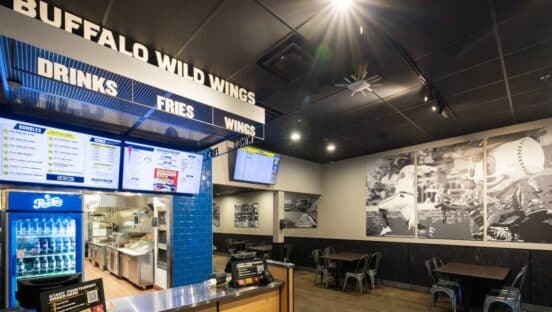In today’s world, it’s difficult to identify a “typical” quick-service customer. It’s not a one-size-fits-all bunch, but rather, a diverse population with a range of individual preferences. A single restaurant’s customer base is often composed of wildly different taste profiles, dietary needs, desires, values, and priorities. If there ever was such a thing as a typical quick-serve client profile, it no longer exists. Instead, today’s customer is often defined by smaller niche categories that attract them to a specific restaurant. It may be a special dietary need, budget restraints, convenience, or a combination of any number of factors. In understanding these niches brands can better create advertising campaigns and ensure that the right consumer is coming through the door.
Modern restaurants have adjusted to the diversified consumer base they now serve: from carnivores to vegans and gluten sensitive to lactose intolerant, as well as from all ages, ethnicities, and socioeconomic backgrounds. With such a diversified consumer, it feels as though restaurants can cater to anyone. This is oftentimes reflected in their advertising strategies. But, a broad-based message targeting a very wide audience will not appeal to the specific niche audiences who consume your product. Each consumer is individually attracted to different menu items. It’s not the McDonald’s name that gets the mother through the drive-in window; it’s the Happy Meal for her toddler. An advertising strategy must reflect this concept.
For this reason, it makes sense for quick serves to supplement a national TV, radio, or print ad campaign with a narrowcasting online campaign. This approach allows a restaurant to target specific audiences with specific messages about specific menu items. For the burger joint that offers a fish sandwich, the steakhouse that has a wide selection of salads, and the ice cream shop that has a menu of sugar-free flavors, online campaigns can connect brands with alternative audiences directly and cost-effectively. Online advertising is to an advertising campaign what the gluten-free muffin is to a menu: Pinpointing one specific customer and letting him know that there’s something for everybody at your concept.
To make an online campaign effective, deciding whom to target is key. For quick serves, this may include a list of various niche categories. Online advertising technology allows brands to get really granular, but it requires some in-depth customer research and data examination. For example, if a marketer knows that a large percentage of his patrons are moms, there should be additional insights into the values each of these moms hold. What type of mother is visiting the restaurant? What is her top priority? There are moms on a budget who would like coupons, moms who are weight-conscious and want diet options, moms in a hurry who want to know if your restaurant has drive-thru access, and moms who are very diligent about healthy ingredients for their kids, to name a few.
In each case, it’s not enough to use a clever online advertising algorithm to target “moms” in general. Instead, creative for the ad campaign should vary and include compelling, relatable content to connect to a particular sub-sect of moms. Utilizing product messaging, deal offers, and promotions will draw a wider and more diverse audience to your restaurant. Remember: When digitally targeting potential customers, both the media buying and creative process must keep this level of customer granularity in mind.
After deciding whom to target, it’s time to decide how. I advise quick-service clients to leverage partner networks to optimize their online ads. Choose your partners (such as publishers like websites, blogs, social media, newspapers, and magazines) to bring ads right in front of a target audience, which will lead to deeper viewer engagement on your own website.
Another thing to consider is reach, which is where mobile comes into play. Mobile advertising allows brands to engage consumers at any time of day, no matter where they are. Restaurants should offer coupons and promotion codes on mobile-optimized landing pages so customers can see, download, and use them on both their computers and their smartphones. With a coupon ready to be redeemed right on their phones, diners are more likely to visit a restaurant now; it’s instant gratification for both parties.
Quick serves are in a unique position with such a diverse consumer base, and this can make advertising quite difficult. In understanding this audience on a granular level, and then targeting them accordingly, brands can greatly increase the return on investment for any ad. And, by creating engaging ads with compelling calls to action, the chances of converting a website visitor to a paying restaurant patron is increased. For today’s restaurants, dynamic, creative advertising concepts combined with targeting technology are, to borrow an analogy from the food world, the best thing since peanut butter and jelly.












